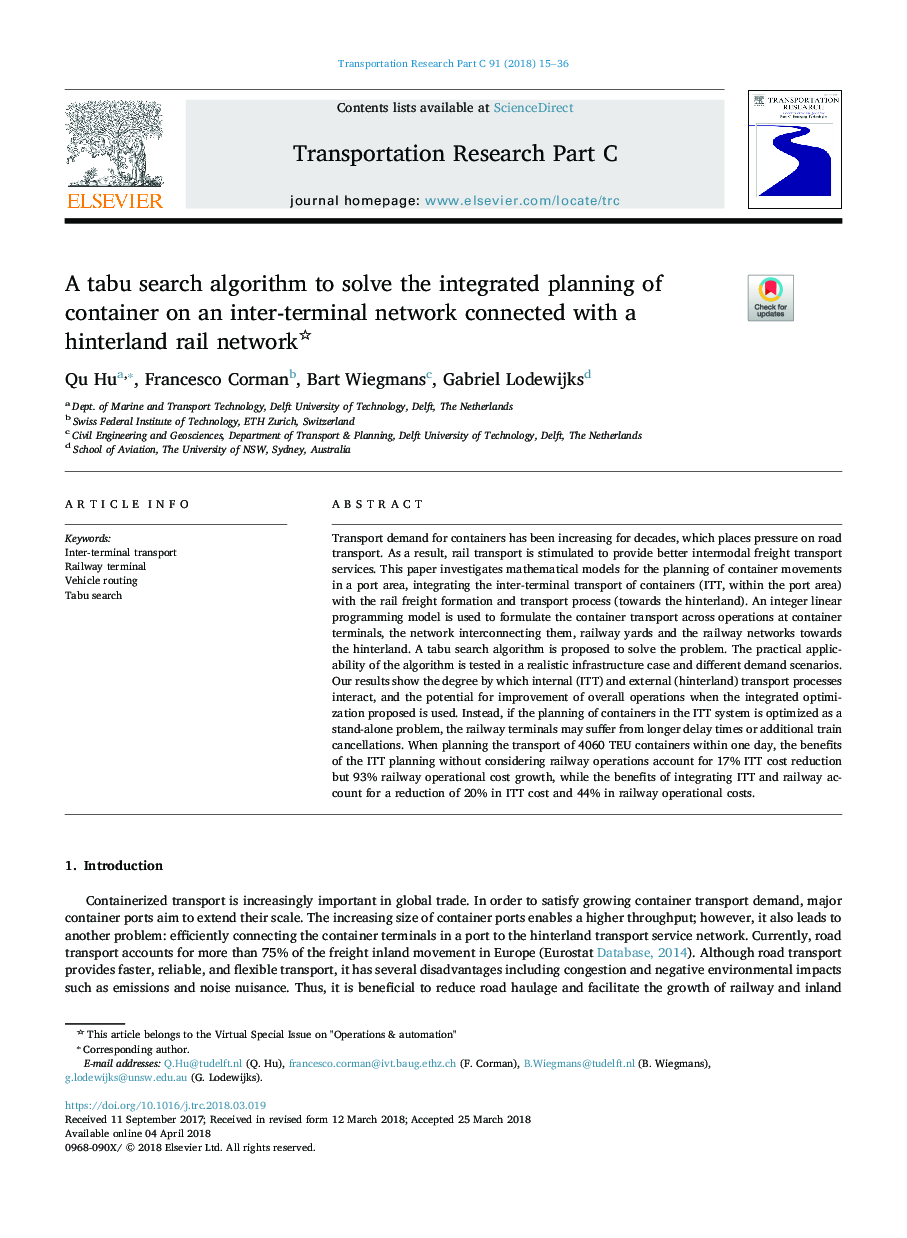| Article ID | Journal | Published Year | Pages | File Type |
|---|---|---|---|---|
| 6935900 | Transportation Research Part C: Emerging Technologies | 2018 | 22 Pages |
Abstract
Transport demand for containers has been increasing for decades, which places pressure on road transport. As a result, rail transport is stimulated to provide better intermodal freight transport services. This paper investigates mathematical models for the planning of container movements in a port area, integrating the inter-terminal transport of containers (ITT, within the port area) with the rail freight formation and transport process (towards the hinterland). An integer linear programming model is used to formulate the container transport across operations at container terminals, the network interconnecting them, railway yards and the railway networks towards the hinterland. A tabu search algorithm is proposed to solve the problem. The practical applicability of the algorithm is tested in a realistic infrastructure case and different demand scenarios. Our results show the degree by which internal (ITT) and external (hinterland) transport processes interact, and the potential for improvement of overall operations when the integrated optimization proposed is used. Instead, if the planning of containers in the ITT system is optimized as a stand-alone problem, the railway terminals may suffer from longer delay times or additional train cancellations. When planning the transport of 4060 TEU containers within one day, the benefits of the ITT planning without considering railway operations account for 17% ITT cost reduction but 93% railway operational cost growth, while the benefits of integrating ITT and railway account for a reduction of 20% in ITT cost and 44% in railway operational costs.
Keywords
Related Topics
Physical Sciences and Engineering
Computer Science
Computer Science Applications
Authors
Qu Hu, Francesco Corman, Bart Wiegmans, Gabriel Lodewijks,
